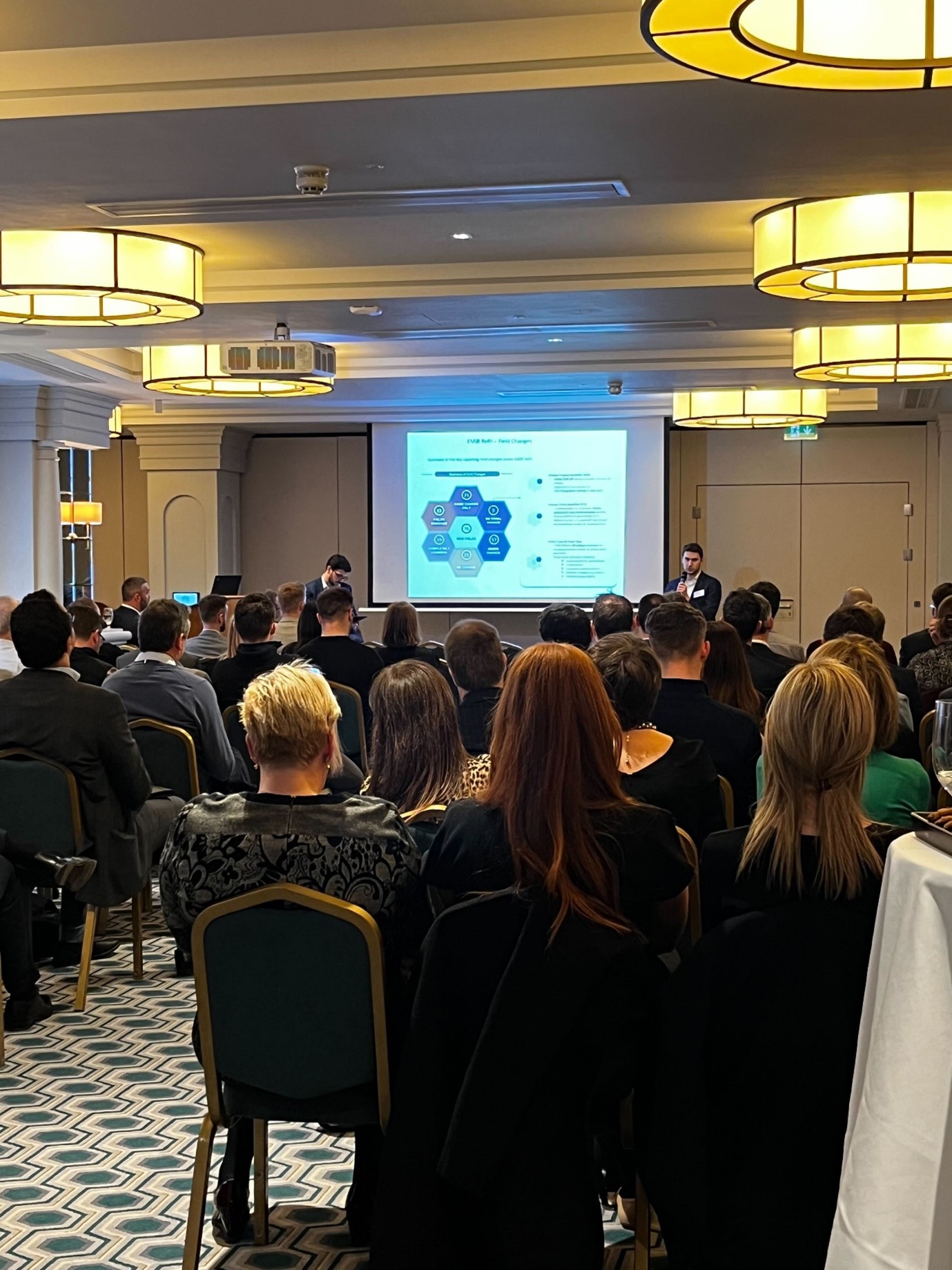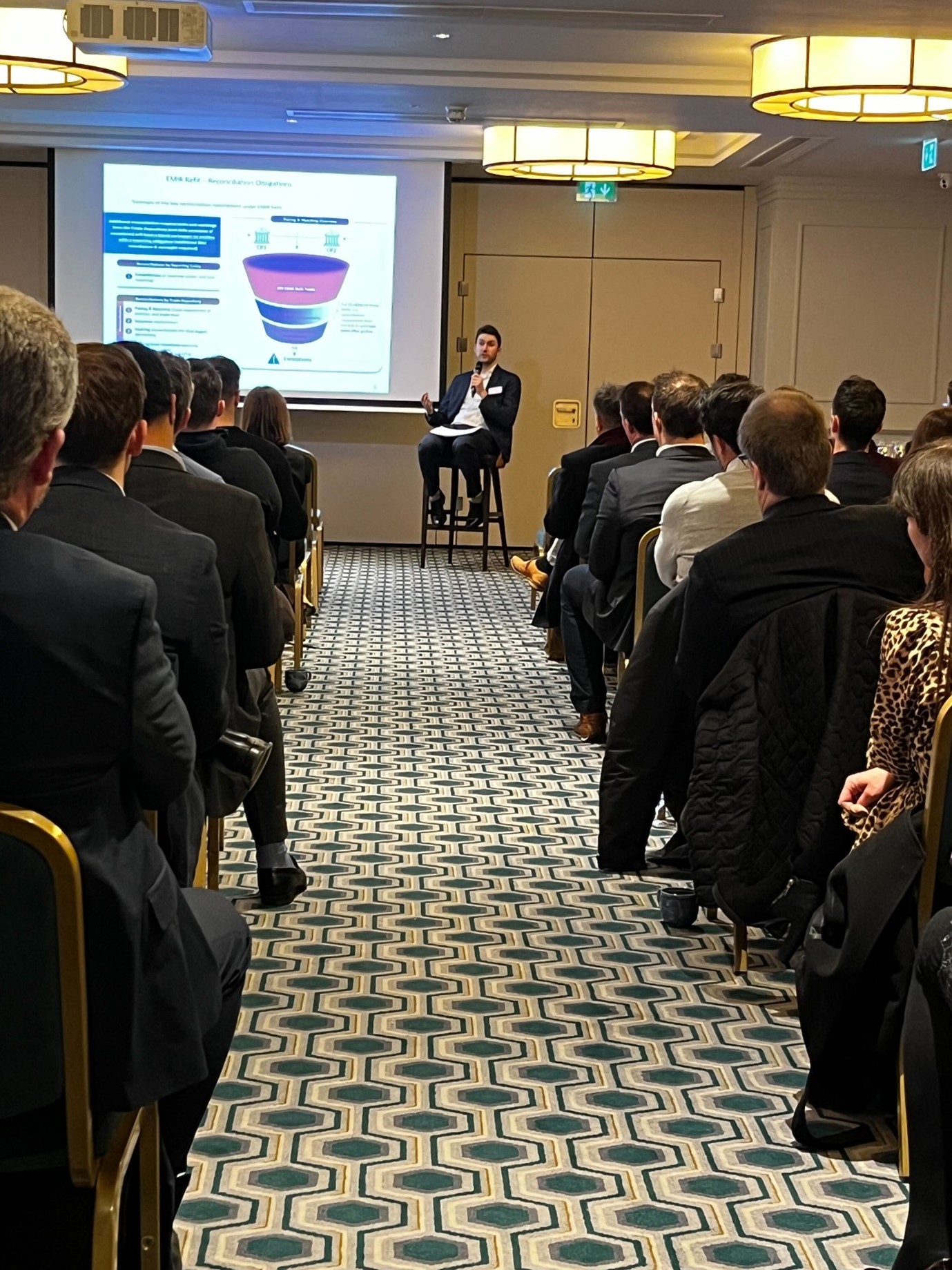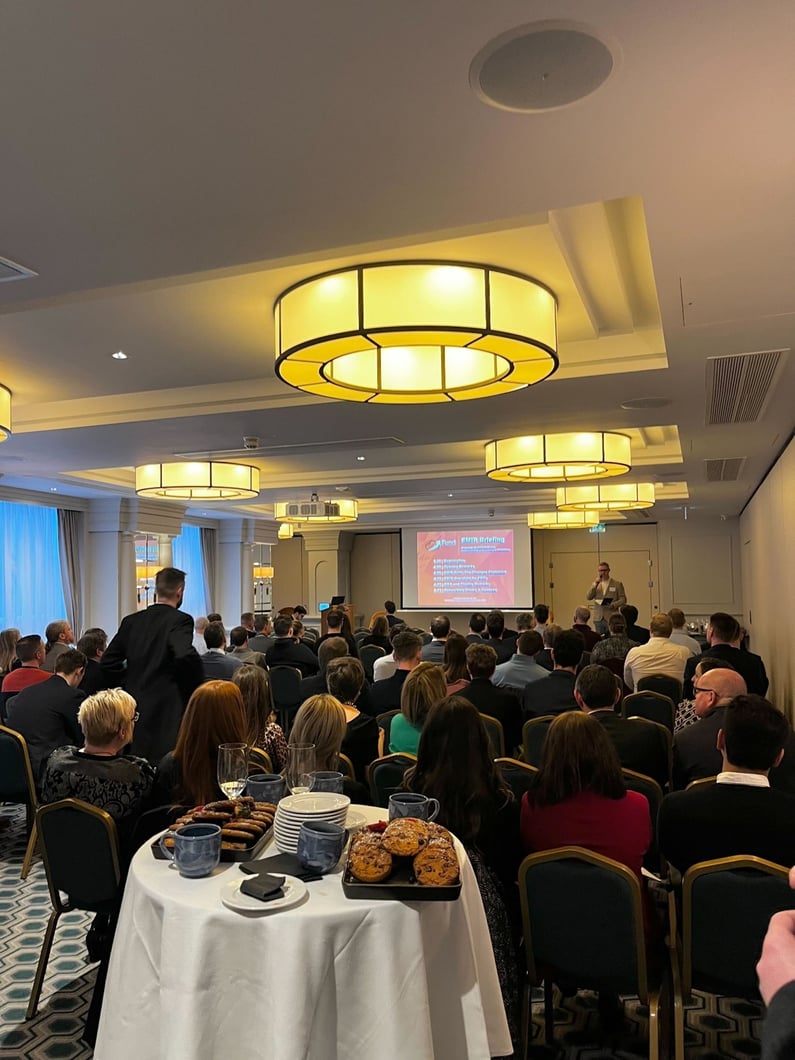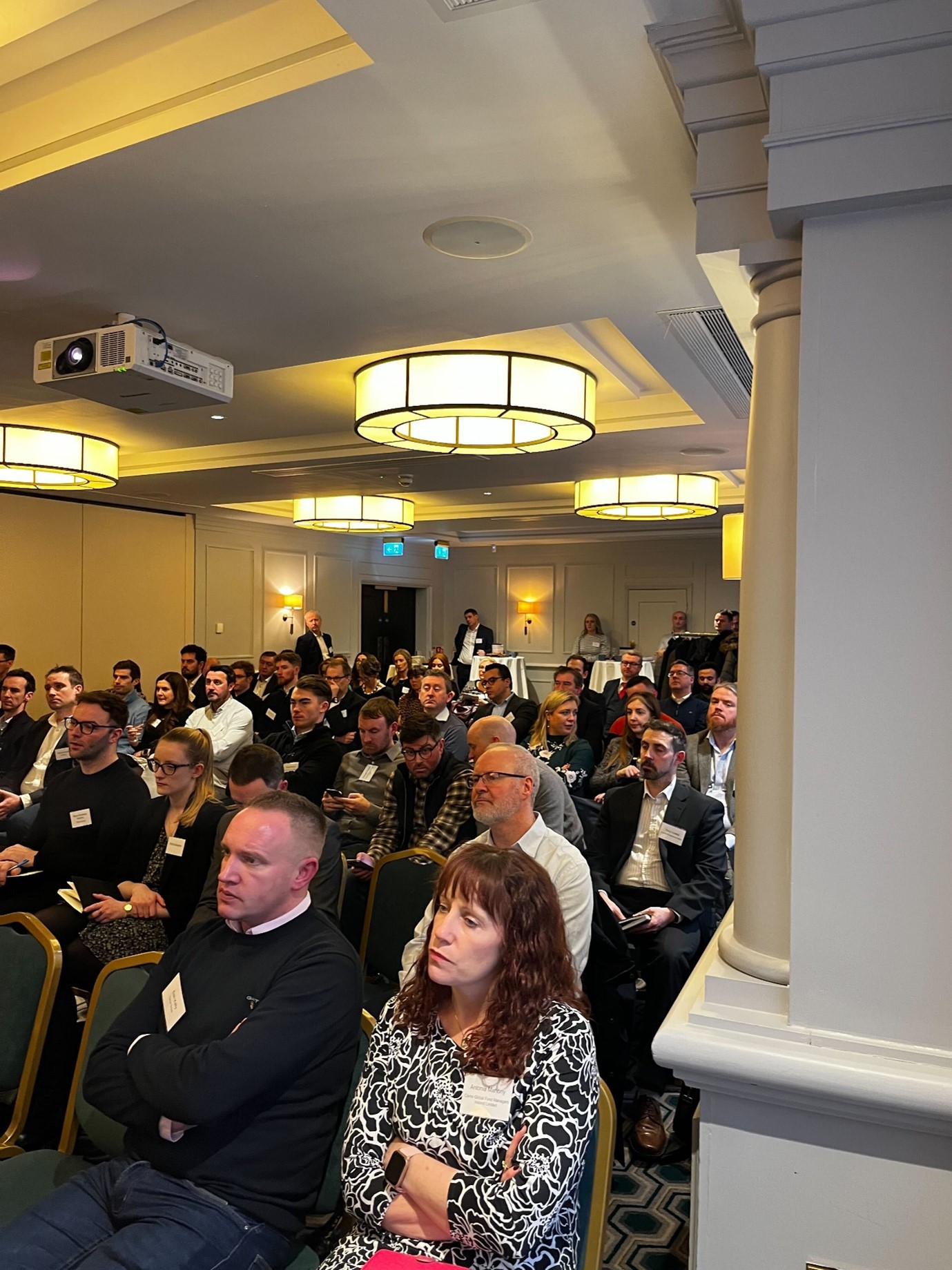
On the 1st of February 2023 we hosted an EMIR briefing event in Dublin for clients and industry colleagues.
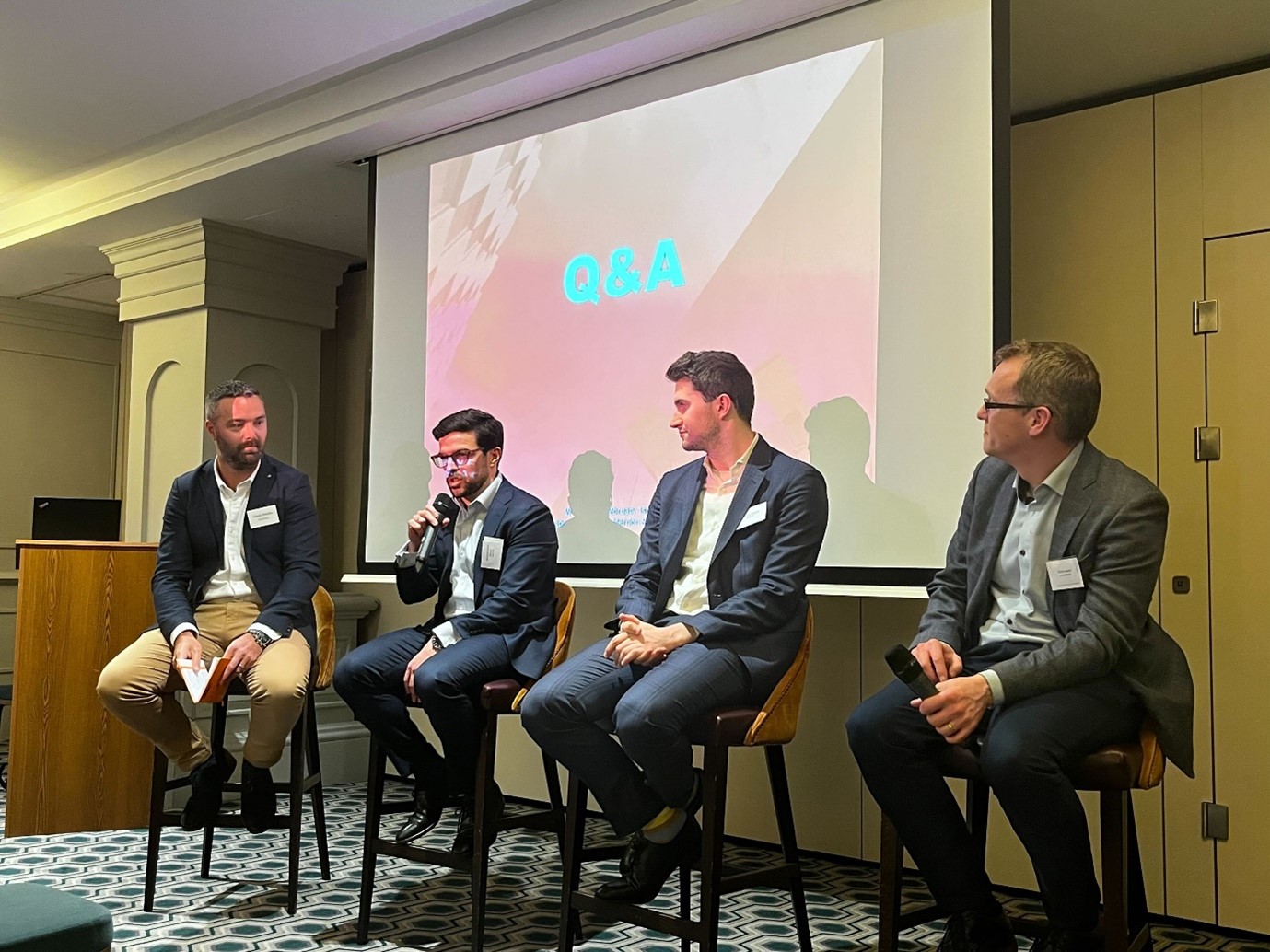
To discuss joining our EMIR Working Group, receive our whitepaper, sample board report or discuss Fund Recs EMIR Oversight solution please reach out to Gerard Gilsenan: gerard@fundrecs.com
We were joined on Wednesday February 1st by industry experts Bernardo Castel-Branco and Benjamin Shenkin from Alpha FMC and Daniel Lawlor from Aquest Advisory to discuss how to prepare for the upcoming EMIR Refit changes and present an oversight framework for Fund Management Companies.
Over 90 industry colleagues joined on the day and some key takeaways are listed below:
- EMIR Refit April 2024.
- Upcoming changes to the reconciliation and reporting requirements under the Refit will see the number of reportable fields increase to over 200, more than those required under MIFID, MIFIR and SFTR.
- Reporting will also cease to be in CSV format and move towards the more formatted XML, this is likely to have contributed to the 18 month implementation period as opposed to the usual 12 month turnaround seen as the industry norm for regulatory change.
- What should firms do now?
- Start their program immediately
- Focus on Budget
- Conduct an Impact assessment
- Ensure Governance structure is in place and is robust
- Going forward there will be less room and tolerance for error as the data is being used by the regulators to perform systemic exposure analysis.
- Rigorous testing is vital ahead of the April 2024 deadline
- It is not all doom and gloom - Technology solutions are available and managers should take advantage of 3rd party providers
-
- Increased oversight from regulators.
- CBI message has been clear, implementation period is over and managers are expected to improve levels of data quality
EMIR Refit
On October 7th 2022, the technical standards for EMIR Refit were published in the Official Journal of the European Union and on December 20th 2022, ESMA published the final guidelines and technical documentation relating to the reporting validations.
Extensive changes to reporting fields and format.
The reconciliation and reporting requirements under the EMIR REFIT will see the number of reportable fields brought to a total of 203, a value higher than that required under both MIFIR and SFTR. This is a hefty increase from the current 129 which will also see the removal of 15 existing fields deemed surplus to requirements, and the material change to the definition or requirement for approximately 30 more.
Some of the new fields, such as the Prior and Subsequent UTI may pose a challenge to many firms, whereas others such as the introduction of the Unique Product Identifier (UPI) under Anna DSB should facilitate the effective aggregation of OTC derivatives transaction reports on a global basis and reduce data quality inconsistencies caused by the varied use of ISIN and Classification of Financial Instrument (CFI) codes.
The introduction of the UTI waterfall, and departure from flexible bilateral agreements, may also assist in clarifying the creation and dissemination of the trade identifiers in the case where no agreement exists between counter-parties as to where the responsibility lies. Given the early T+1 deadlines the waterfall imposes, this is likely to be seen as a welcome change.
The updated reporting encompassing these changes will also change and cease to be in the more “plug & play” CSV format, instead switching to a more rigid XML. This move, in line with ISO 20022 standards, is likely to have contributed to the 18 month implementation period as opposed to the usual 12 month turnaround seen as the industry norm for regulatory change.
Increased Reconciliation Requirements
There will be increased responsibility on trade repositories to report breaches and relay these to the reporting entities to resolve – this involves the TRs reconciling on pairing and matching in order to produce exception reporting. Abnormal, missing or stale values are to be highlighted to the reporting entities by the TR.
Some 61 of the reconcilable fields only become required 2 years post refit go live.
Early action is essential.
In light of the above amendments being introduced under the EMIR Refit, much of the discussion centered around what firms should be doing now, as we cross the 15 month mark until the EU go live date. The key action raised, indicated that firms should start or update their programs as soon as possible.
Fund Recs EMIR Working Group and Industry Whitepaper
On the evening we also announced the creation of the Fund Recs EMIR Working group which is open to all clients using our EMIR solution. The Working Group provides a platform for Fund Recs and our clients to collaborate on identifying practical solutions to the challenges posed by the regulation.
Additionally, in collaboration with Danny from Aquest, we will be publishing an industry whitepaper to support the industry in understanding their obligations. The document will be a consolidation of regulator comment and indication of current market practice among peers.
To discuss joining our EMIR Working Group, receive our whitepaper, our sample board report or discuss the Fund Recs EMIR Oversight solution please reach out to Gerard Gilsenan: gerard@fundrecs.com
Check out some photos of the evening below:

